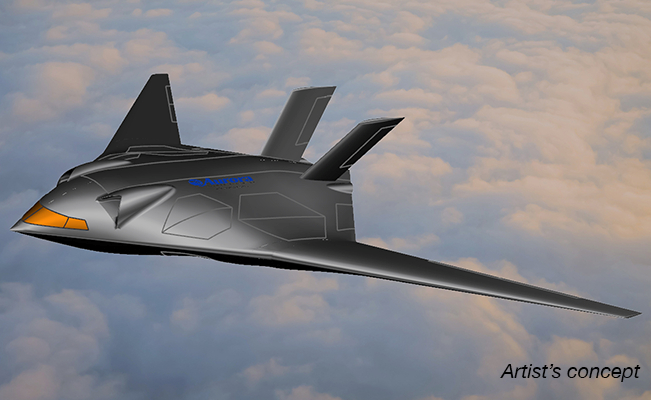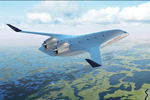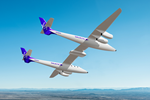Aurora Flight Sciences to design high-speed, vertical lift X-plane
Program leverages more than 30 years of investment in novel VTOL and blended wing body platforms, targets first demonstrator flights within 42 months.

Artist’s concept of the X-plane demonstrator. Photo Credit: Aurora Flight Sciences
Aurora Flight Sciences (Bridgeport, W.Va.), a Boeing Company, has been selected for phase 1 of the Defense Advanced Research Projects Agency (DARPA) SPeed and Runway INdependent Technologies (SPRINT) X-Plane Demonstration Project. This project aims to design, build and fly an X-plane to demonstrate technologies and integrated concepts necessary for a transformational combination of aircraft speed and runway independence. This initial award funds work to reach a conceptual design review and includes an executable option to continue work through preliminary design review.
Under this award, Aurora is designing a high-lift, low-drag fan-in-wing (FIW) demonstrator aircraft that integrates a blended wing body platform, with embedded engines and moderate sweep, with a vertical flight design comprised of embedded lift fans linked to the engines via mechanical drives. The aircraft could deliver game-changing air mobility capability by combining cruise at more than 450 knots true airspeed (KTAS) with vertical takeoff and landing (VTOL) in a single platform.
The combined Aurora and Boeing team brings deep experience in agile vehicle prototyping, vertical lift and cruise transition technology, and blended wing body aeroperformance. The program will build on past flight programs like the Boeing X-48 blended wing body aircraft and the Aurora Excalibur UAS that combined jet-borne vertical lift with three electric, louvered lift fans that would retract into the wing in forward flight.
Design work will take place at Aurora and Boeing facilities across multiple states including Virginia, Massachusetts and Pennsylvania. The program is targeting first flight of the X-plane demonstrator within 42 months.
Related Content
-
“Structured air” TPS safeguards composite structures
Powered by an 85% air/15% pure polyimide aerogel, Blueshift’s novel material system protects structures during transient thermal events from -200°C to beyond 2400°C for rockets, battery boxes and more.
-
Combining multifunctional thermoplastic composites, additive manufacturing for next-gen airframe structures
The DOMMINIO project combines AFP with 3D printed gyroid cores, embedded SHM sensors and smart materials for induction-driven disassembly of parts at end of life.
-
Welding is not bonding
Discussion of the issues in our understanding of thermoplastic composite welded structures and certification of the latest materials and welding technologies for future airframes.



